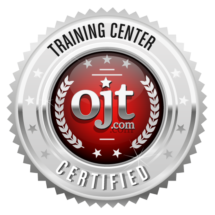
INDUSTRY-LEADING LIVE
INSTRUCTOR-LED TRAINING
World Class Training Content, Delivered On-Demand
BRIDGING THE GAP
between career seekers
& employers
from COAST-TO-COAST

World Class Training Content, Delivered On-Demand
between career seekers
& employers
from COAST-TO-COAST
Design Engineer
QUALIFICATIONS
“A” Levels in Maths and physical science (Physics, Biology or Chemistry), a professional degree in design engineering, product design engineering, mechanical engineering. manufacturing engineering, or technology; like B.E. or M.E., through a school of an engineering program accredited by the Accreditation Board for Engineering and Technology (ABET); accompanied with the experience requirement and passing the Fundamentals of Engineering (FE) and Practice of Engineering (PE) examinations for Licensure candidates; Engineering certifications like AutoCAD certifications, Certified Professional in Engineering Management (CPEM), the Certified Manufacturing Engineer (CME) from the Society for Manufacturing Engineers, the Certified Reliability Engineer (CRE) from the American Society for Quality, etc.; encompassing at least 4 to 6-year requisite study and practice credit hours in the area or field of Design or Manufacturing Engineering; combined with – On the Job Training (OJT) programs, Apprenticeships, Design Engineering Workforce Job Training or Experience; covering design and manufacturing engineering work topics including Engineering fundamentals, concepts and principles, and depending on the field of specialization, related subjects like; Planning and 2D & 3D engineering, manufacturing processes, products, prototypes & machine design, mechanics, thermodynamics, Computational Fluid Dynamics (CFD), Finite Element Analysis (FEA), Computer Graphics, Design & Engineering or CAD/ CAE software and software systems, math, physics, chemistry, biology etc. with related hands-on projects; knowledge of engineering analysis tools like ANSYS and ProMechanica, Mathematical computing, and analysis tools like LabView, Matlab, Excel, etc, other apparatus, plant, machinery, equipment and standards; quality control and materials, prototyping, testing, lab experiments & workshops, statutory mandates, and safety protocols, project proposal, planning, design, development, practice, management, & documentation. An MBA or a Post Graduation in Science, Technology, Engineering or Mathematics (STEM) or a Master’s Degree in engineering will be an added plus.
AVERAGE ANNUAL PAY
(Credits: www.payscale.com)
| Entry-level (0-12 months) | $ 61,073 |
| Early career (1-4 years) | $ 65,747 |
| Mid-career (5-9 years) | $ 74,398 |
| Experienced (10+ years) | $ 81,615 |
PROJECTED GROWTH
(Credits: www.bls.gov)
Design Engineer is an excellent career, in which employment is expected to grow at a steady 4 percent from 2019 to 2029.
SKILLS/ TRAITS NEEDED
Besides design engineering and/or management qualifications and skills, the Design Engineer needs to be “hands-on”, research-oriented, self-driven with strategic, creative, critical, and lateral thinking; a methodical approach, structured thinking & planning, analysis to design & produce innovative design solutions, evaluation, creation & testing of prototypes, visualizing, computation and problem-solving skills, and a strong scientific aptitude; in-depth knowledge of field mechanics, thermodynamics, products, machinery, systems, manufacturing processes, procedures, techniques, technologies, designs, plans, blueprints, diagrams, materials, sustainability, standards & best practices, the statutory and safety protocols, project management and documentation. Ability to work under pressure for lengthy periods, extreme focus, memory, attention to detail, math & technical acumen and computer software knowledge, strong written and verbal communication, time management, prioritization, reporting, inter-personal & soft-skills, memory, patience, and perseverance, are the vital ingredients of a successful Design Engineer.
WORK FUNCTIONS
Design Engineers may carry a broad spectrum of responsibilities which could be inter-disciplinary; from the initiation, and end-to-end product development cycle; including designing, developing, creating and testing prototypes for products, components, engines, turbines, power-producing & consuming machinery, and manufacturing equipment & processes; besides this, they may sometimes also be involved till implementation, deployment, and commissioning; these could broadly involve requirements gathering, evaluating, proposals, contracts, preparing technical specifications, drawings, designs; planning, controlling, ensuring quality standards, and compliance to technical specs, supervising, coordinating, and managing activities, procurement, controlled experimentation, implementing best practices; adhering to codes, guidelines, regulations and safety protocols, environment protection, quality assurance and quality control (QA/ QC) and cost-optimization; reviewing work progress, client visits, oversight and status reporting, risk management, equipment & materials procurement, maintenance, and organizing workflow operations. Apart from this, they also design and develop processes, policies, and procedures, obtain statutory approval, liaising with authorities to ensure smooth operations, and lower costs; identifying and resolving technical pain points, and implementing strategic, cost-effective, innovative, and robust design solutions. Besides, they may also additionally be responsible for the team and people management; recruiting, training, coaching, mentoring, delegating, and appraising labor and employee work performance, hiring and handling contractors, cash flow and cost control, preserving assets, facilitating technical or engineering audit, technical and status reporting, and documentation. They may also contribute towards marketing and sales support, organizational policy frameworks, besides leading the efficiency and costs savings goals of the organization through meticulous planning and execution, aligned to the organizational goals.
Related Careers